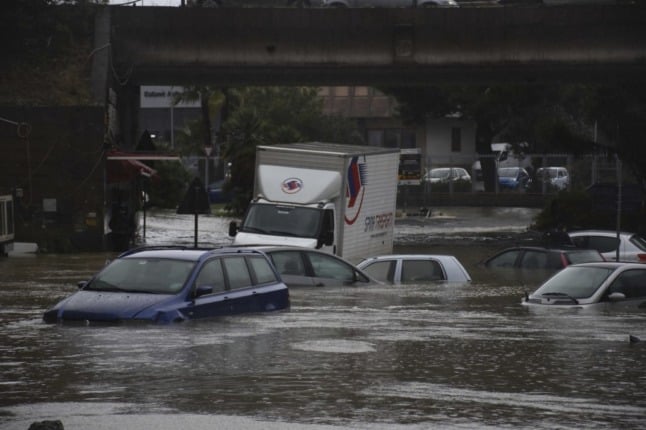A rare tropical-style cyclone known as a “medicane” is set to reach Sicily’s eastern coast and the tip of mainland Calabria between Thursday evening and Friday morning, according to Italian public research institute ISPRA.
“Heavy rainfall and strong sea storms are expected on the coast, with waves of significant height over 4.5 metres (15 feet),” ISPRA said.
The Italian Department for Civil Protection placed eastern Sicily under a new amber alert for Thursday and the highest-level red lert for Friday in anticipation of the storm’s arrival, after almost a week of extreme weather in the area.
🔔🔴 #allertaROSSA, #29ottobre, su parte della Sicilia
🔔🟠🟡 #allertaARANCIONE e #allertaGIALLA su settori di Calabria e Sicilia
⛈️🌬️Persistono temporali e forti raffiche di vento nel Sud Italia. Leggi l'avviso di condizione meteo avverse del #28ottobre: https://t.co/mXQN2i5GY3 pic.twitter.com/KtuGHToN7o— Dipartimento Protezione Civile (@DPCgov) October 28, 2021
A total of three people have been reported killed in flooding on the island this week amid storms that left city streets and squares submerged.
On Tuesday, parts of eastern Sicily were ravaged by a cyclone following days of heavy rains that had sparked flooding and mudslides, killing three people.
Television images from Tuesday showed flooding in the emergency room of Catania’s Garibaldi-Nesima hospital, while rain was seen pouring from the roof inside offices at the city courtroom.
Thursday’s storm was set to hit the same area around Catania, Sicily’s second-largest city, even as residents were still mucking out their streets and homes.
Remember Sicily, where this summer the highest European temperature ever was recorded?
This is Sicily now. https://t.co/O62MR1s7rX
— Giulio Mattioli (@giulio_mattioli) October 26, 2021
Schools were closed in Syracuse and Catania, where the local government ordered public offices and courts closed through Friday.
The mayor of Catania on Tuesday shut down all businesses and urged residents to stay home.
Antonio Navarra, president of the Euro-Mediterranean Center on Climate Change, told Italy’s Corriere della Sera newspaper this week that Sicily was at the centre of extreme weather events, including heatwaves and cyclones.
“We’re trying to understand if, with climate change, these phenomena will become even more intense, if they will change their character as their frequency intensifies,” he said.
READ ALSO: Climate crisis: The Italian cities worst affected by flooding and heatwaves

Other forecasters have said the “medicane” is the latest evidence that the climate crisis is irreversibly tropicalising the Mediterranean, after the island’s south-eastern city of Syracuse this August recorded a temperature of 48.8C, the hottest ever seen in Europe.
“Sicily is tropicalising and the upcoming medicane is perhaps the first of this entity, but it certainly won’t be the last,” Christian Mulder, a professor of ecology and climate emergency at the University of Catania, told The Guardian on Wednesday.
“We are used to thinking that this type of hurricane and cyclone begins in the oceans and not in a closed basin like the Mediterranean. But this is not the case,” he said.
“This medicane is forming due to the torrid climate of north Africa and the warm waters of the Mediterranean Sea. The Aegean Sea has a temperature of 3C higher than the average, while the Ionian Sea has a temperature of almost 2C higher than the average. The result is a pressure cooker.”
The storm is expected to leave the area between Saturday and Sunday.



 Please whitelist us to continue reading.
Please whitelist us to continue reading.
Member comments